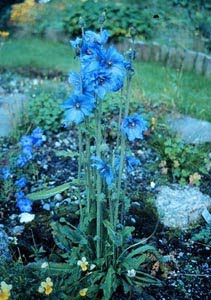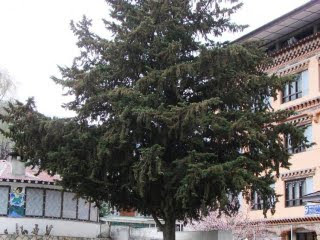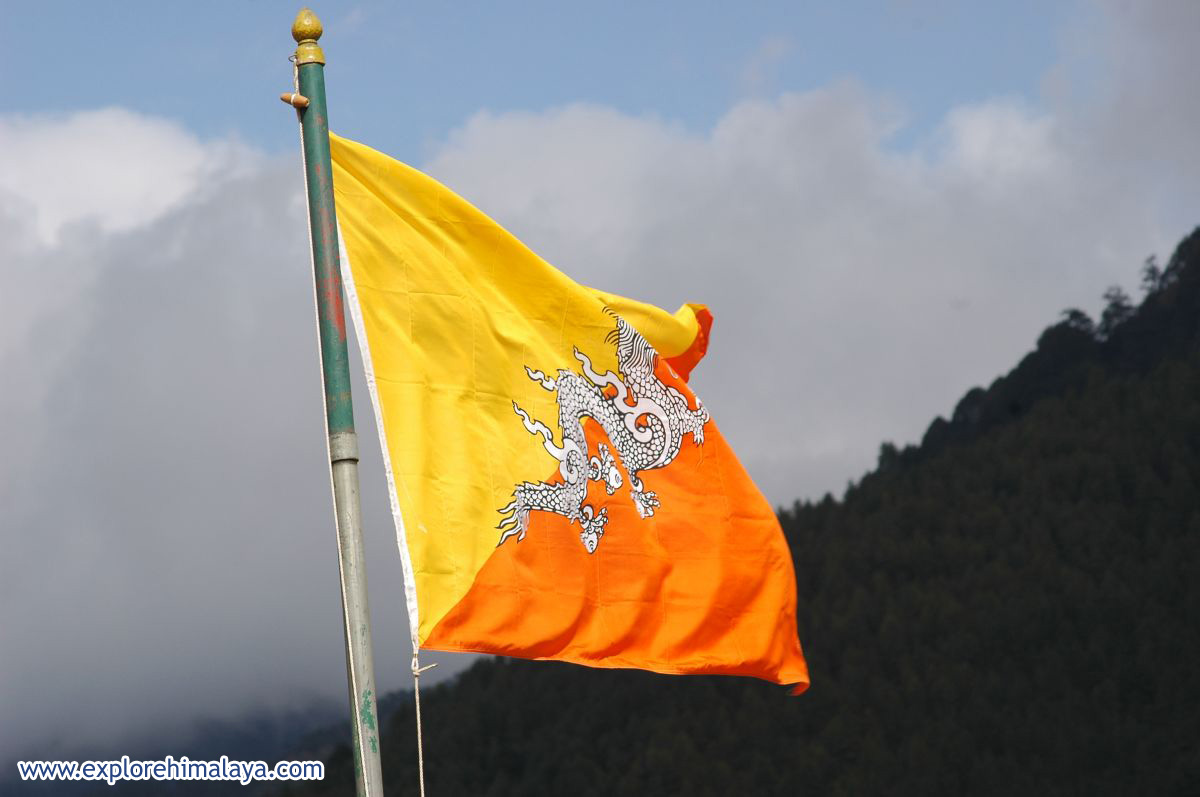 The national flag is rectangular with a white dragon stretched across a two-color diagonal. The upper part of the flag is golden yellow, symbolizing the secular power of the monarchy. The lower half is orange, representing the state religion, Mahayana Buddhism. The white in the dragon stands for purity while the jewels clasped within its claws convey the wealth and perfection of the nation.
The national flag is rectangular with a white dragon stretched across a two-color diagonal. The upper part of the flag is golden yellow, symbolizing the secular power of the monarchy. The lower half is orange, representing the state religion, Mahayana Buddhism. The white in the dragon stands for purity while the jewels clasped within its claws convey the wealth and perfection of the nation. The national day of
The national day of  The national flower is the Blue Poppy (Meconopsis grandis), which grows above
The national flower is the Blue Poppy (Meconopsis grandis), which grows above
The national tree is the Cypress
The Bhutanese identify with the cypress because of its straight structure, sturdy nature and its ability to inhospitable terrain.
 The national bird is the Raven. It represents the most powerful guardian deities of the nation. So great is the significance of the raven that it is depicted on the crown of the monarchy.
The national bird is the Raven. It represents the most powerful guardian deities of the nation. So great is the significance of the raven that it is depicted on the crown of the monarchy.
The national animal is the Takin, a rare bovid mammal, unique only to Bhutan 250 kilograms and subsists on bamboo. The Takin can be seen at the Thimphu Takin zoo.
www.megatimes.com.br
www.klimanaturali.org

